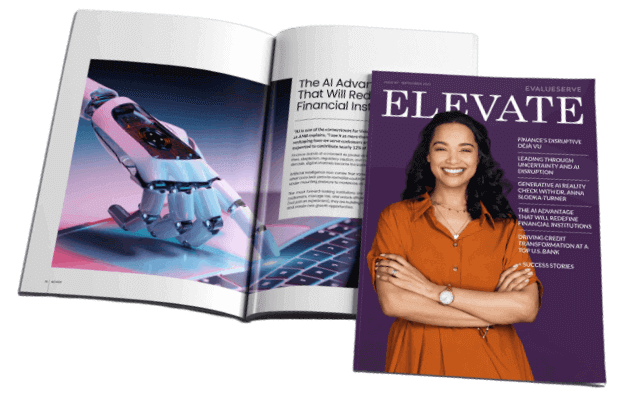The financial services landscape is undergoing a monumental shift. As the Great Wealth Transfer (an estimated $84 trillion by 2045) begins, a new generation of inheritors is seeking professional guidance. This presents a massive, once-in-a-generation opportunity for banks and wealth management firms to transition their self-directed and deposit-only clients into full-service advisory relationships.
The key to capitalizing on this opportunity lies in understanding the modern investor's needs and strategically evolving from simple banking platforms to comprehensive wealth management ecosystems.
The Compelling Case for Advice: Why the Time is Now
The data makes it clear: a significant portion of the market is primed for advice. According to the latest Cerulli Affluent Investor Tracker, 58% of investors who use a bank for deposits are still self-directed. However, 42% are "prospects" actively seeking greater advice relationships. This gap is set to grow exponentially with the ‘Great Wealth Transfer.’
Multiple studies confirm this trend.
- RBC Wealth Management Survey (2025): A staggering 94% of heirs want professional help in navigating inheritance conversations, yet only 39% of Boomers have provided guidance to their heirs. This creates a massive advice gap for firms to fill.
- The Wall Street Journal Survey (2024): This survey highlights demand among specific demographics.
- A Vast Untapped Market: 8 in 10 respondents who are set to inherit wealth plan to use a financial professional; however, only one-third currently have an advisor they intend to work with after receiving their inheritance.
- Millennials: While often self-directed, 9 in 10 millennial respondents said they trust the advice and decisions of financial professionals.
This research demonstrates that the demand for financial advice is not just theoretical but rather immediate and widespread across key segments of the market.
The Strategic Playbook: How to Capitalize on the Opportunity
Firms are responding to this market demand with innovative strategies. The shift from self-directed to advised relationships is no longer a luxury; it’s a necessity for survival and growth. To succeed, financial institutions are embracing a multi-pronged approach that blends digital innovation, human-centric design, and strategic expansion. This playbook outlines four core strategic pillars for capturing this opportunity.
1. Building a Seamless Digital Journey
The modern investor expects a seamless, digital-first experience. This means building platforms that not only facilitate transactions but also proactively guide users toward a deeper, more valuable relationship. By leveraging data analytics and AI, firms can identify clients with complex needs and present them with a frictionless path to a full advisory relationship.
Example: Bank of America's Unified App

Bank of America has consolidated five apps (Bank of America, Merrill Edge, MyMerrill, Bank of America Private Bank, and Benefits OnLine) into one to provide a seamless digital experience. This move is designed to convert users into advice clients by
- Providing a single, unified view of a client’s full financial picture.
Using digital tools, such as ‘Life Plan’ and the ‘Net Worth Estimator,’ to prompt long-term planning and spark advice conversations when gaps or complex needs arise. - Leveraging Erica, an AI assistant, as a gateway to human advisors.
As per an article published in April 2024, with 147,000 internal referrals driving $13.5 billion in new assets, the unified experience is clearly converting users into advice clients.
2. Creating Embedded Advice Funnels
This strategy involves a proactive, automated approach to identify and transition high-net-worth clients into advisory tiers. By using a client’s account size as a trigger, firms can offer new, high-level services that make the transition feel like a natural upgrade, not a sales pitch.
Example: Charles Schwab's Private Client Service

Schwab, a firm known for its self-directed platforms, has masterfully leveraged this strategy. The company now automatically enrolls high-net-worth self-directed investors into its private client service tiers ($1–10 million) and Private Wealth Services (>$10 million).
- This approach provides a ‘first taste of tailored advice,’ blending investing, banking, and lending into a single, cohesive experience. It makes the transition to a full advisory relationship feel like a natural upgrade, not a sales pitch.
3. Expanding the Human-centered Footprint
This pillar focuses on physical expansions and acquisitions to attract high-net-worth clients who value high-touch, in-person experiences. Firms are opening new, modern financial centers to serve as hubs for personalized, holistic support across banking, lending, and investments.
Example: JPMorgan Chase

In 2025, JPMorgan Chase opened 14 new J.P. Morgan Financial Centers and plans to open 31 more by the end of 2026, to offer affluent clients personalized, holistic support across banking, lending, and investments.
- This network expansion builds on the company’s acquisition of First Republic Bank in 2023, adding 200 advisors and $200 billion in client assets and reinforcing its goal of reaching 6,000 advisors by the end of 2025.
- It aligns with JLL's 2024 survey, which found that 36% of banking and financial services firms plan to expand wealth locations by up to 10% (JLL, 2024), driven by millennial demand and the projected $84 trillion wealth transfer by 2045.
4. From Self-directed to Guided: Expanding the Advisory Spectrum
This approach leverages a digital-first platform to serve its core client base while building a separate, strategic channel to capture higher-net-worth clients. By creating a two-sided ecosystem, these firms can cater to mass-affluent and affluent segments without disrupting their existing business model.
Example: Robinhood
Initially focused on self-directed investing, Robinhood has expanded its scope to include automated portfolios, signaling a strategic move into wealth management.
- In March 2025, Robinhood launched Robinhood Strategies, a robot-advisory service for gold subscribers, offering managed portfolios starting at $50. With fees capped at $250 annually, it targets emerging investors traditionally underserved by legacy firms.
- Robinhood also announced plans to expand access to a broader user base later in 2025. To reach high-net-worth clients, Robinhood acquired TradePMR in February 2025, thereby gaining access to the RIA channel. Through this platform, Robinhood plans to launch a referral program to connect high-net-worth users (with $100K+) with independent advisors to build a two-sided ecosystem that serves both mass-affluent and affluent segments.
- Together, these moves reflect Robinhood's intent to serve aging millennials seeking more complex advice and position itself as a scalable advisory platform amid the Great Wealth Transfer.
Conclusion: Advice is the New Alpha
In a world where investment returns are increasingly commoditized, advice is the new differentiator. The Great Wealth Transfer is not just about money changing hands; it is about values, legacy, and the urgent need for trusted guidance. Firms that can seamlessly integrate advice, leverage data, and build both physical and digital bridges will be the best positioned to capture these assets in motion and build enduring, multi-generational relationships.
How Evalueserve Can Help You Capitalize on This Opportunity
Navigating this complex landscape requires a strategic approach, backed by robust data and competitive intelligence. For financial institutions and wealth managers looking to capitalize on this historic wealth transfer, Evalueserve provides the actionable insights needed to evolve your strategy and outmaneuver the competition.
Our solutions are tailored to help you transition clients from self-directed to advised relationships by providing the following:
- Market and Competitive Intelligence: We deliver comprehensive, data-driven analysis of the wealth management landscape to help you identify underserved markets and client segments. Our intelligence solutions cover the latest industry trends, evolving regulatory frameworks, and market opportunities, all of which are crucial for making strategic business decisions, such as new investments or potential M&A.
- Competitor Strategy: To counter threats from both legacy competitors and disruptive fintechs, our analysis provides deep insights into competitor positioning, product launches, and strategic plans. It allows you to develop highly focused competitive strategies and understand how to differentiate your value proposition to attract and retain new clients.
- Product Intelligence: We conduct in-depth product benchmarking and provide insights to help enhance your existing offerings and launch innovative new products. This intelligence is critical for ensuring your services meet the evolving needs of the next generation of wealth holders who demand seamless, holistic solutions.
Partnering with Evalueserve will enable you to access relevant and actionable insights on time, accelerate your firm's transition, and secure a leading position in the ever-changing wealth management landscape.
Talk to One of Our Experts
Get in touch today to find out about how Evalueserve can help you improve your processes, making you better, faster and more efficient.




